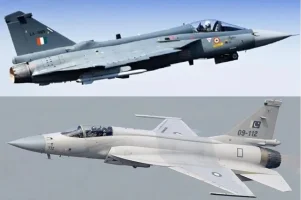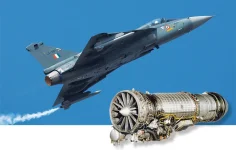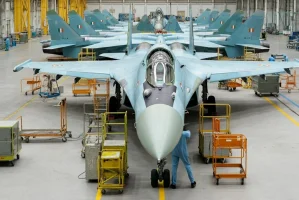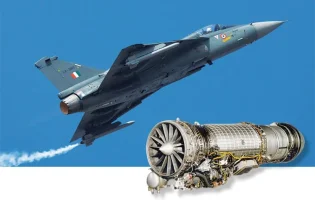- Views: 5K
- Replies: 31

India's Aeronautical Development Agency (ADA) is developing the Twin Engine Deck-Based Fighter (TEDBF), a promising new naval fighter designed to operate from the Indian Navy's aircraft carriers.
While drawing inspiration from the formidable Dassault Rafale M, the TEDBF incorporates several key distinctions that position it as a unique and potentially superior platform.
Visually, the TEDBF shares a similar frontal shape and canopy layout with the Rafale M, but a closer look reveals significant differences. One standout feature is the TEDBF's Diverterless Supersonic Intakes (DSI). Unlike the Rafale M, the TEDBF utilizes these innovative intakes to reduce drag and radar cross-section, enhancing stealth capabilities crucial for operating in radar-heavy maritime environments. DSIs also offer easier maintenance and contribute to overall weight reduction.
Cost efficiency is another major advantage for the TEDBF. While a single Rafale M can exceed $110 million, the projected cost of a TEDBF unit is less than $70 million. This allows for a larger fleet size and reduces India's reliance on foreign suppliers, aligning with the nation's push for self-reliance in defense.
The TEDBF is also leaps ahead in technological integration. Designed with fifth-generation technologies in mind, it will feature Active Electronically Scanned Array (AESA) radars for superior target detection and tracking, advanced stealth features, cutting-edge avionics, and robust electronic countermeasures. These advancements give the TEDBF a potential edge over the Rafale M in electronic warfare and survivability.
Furthermore, the TEDBF boasts reinforced landing gear specifically designed to withstand the rigors of carrier landings. Optimized for short take-off and landing operations, the landing gear incorporates advanced materials to handle the stress of repeated high-impact landings on carrier decks.
Unlike the Rafale M's fixed wings, the TEDBF will have foldable wings, a crucial feature for maximizing limited space on aircraft carriers. This design choice enhances storage efficiency and allows for greater flexibility in carrier operations.
Additionally, the TEDBF's compatibility with both ski-jump ramps and catapult-assisted take-off systems (CATOBAR) makes it adaptable to a wider range of carriers, including India's current and future vessels.
While the TEDBF and Rafale M share some aesthetic similarities, the Indian fighter is a distinct platform built upon indigenous innovation and tailored to the specific requirements of the Indian Navy. With its advanced capabilities, cost-effectiveness, and operational flexibility, the TEDBF is poised to become a cornerstone of India's maritime power projection and a testament to its growing self-reliance in defense technology.





